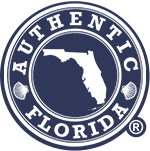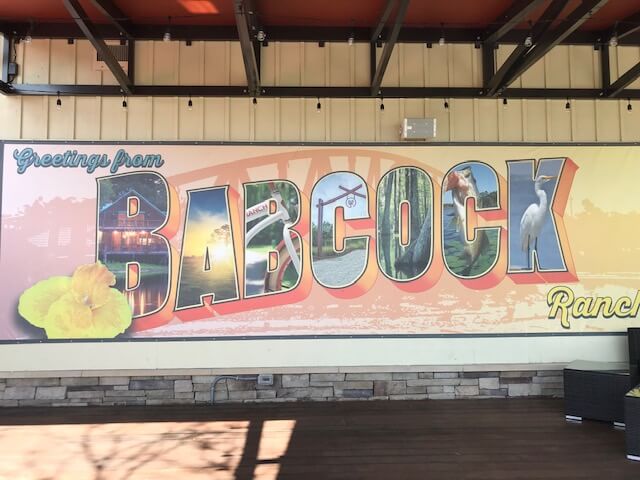Last Updated on September 15, 2022
Recently, we dusted off our cowgirl boots and time-traveled to the historical Babcock Ranch located in southwest Florida just east of Punta Gorda and north of Fort Myers. The 100-year-old ranch covers over 90,000 acres of Florida oak hammocks, pinewoods, pastures, prairies, and wetlands including a Cypress swamp.

What happens at Babcock Ranch?
Florida’s ranching heritage comes alive at the Babcock Ranch through its rustic, authentic Babcock Ranch Adventure Tour. The 90-minute open-air buggy ride on a camouflaged school bus provides a historical snapshot and eco-tour through acres of native habitats and Florida terrain.
Cowhands run cattle much like they did years ago and farmers grow vegetables and sod. Timber is harvested and “cracker cattle” roam the land. With a lineage dating back to the arrival of Ponce de Leon, the cattle were originally brought in as Spanish cargo, adapting well to the Florida heat and scrub.
Sandhill Cranes, turkeys, and free-roaming cows meet the bus while traveling on dirt roads, wooden bridges, gullies, and ponds providing a glimpse of Old Florida’s natural beauty and days gone by.

The bus makes a stop at the Cypress swamp boardwalk featuring a special wildlife treat.
Back at the main gathering area, you’ll find a small collection of historic buildings with displays, a country store (with the ranch palmetto honey), and a seasonal cafe called the Gator Shack (featuring gator bites). Covered picnic tables are available outdoors.
History of Babcock Ranch
In 1914 E.V. Babcock, a Pennsylvania lumber baron purchased 156,000 acres and began logging Florida longleaf yellow pine and bald cypress. The small logging town of Rouxville, population 200, supported the enterprise. Still standing is the town commissary, which served both as the residence for the company manager and as the company store where workers and their families could purchase clothing, basic supplies, and other necessities. There was even an on-duty doctor who doubled as the local barber. A railroad to transport the lumber to market ran through the property.
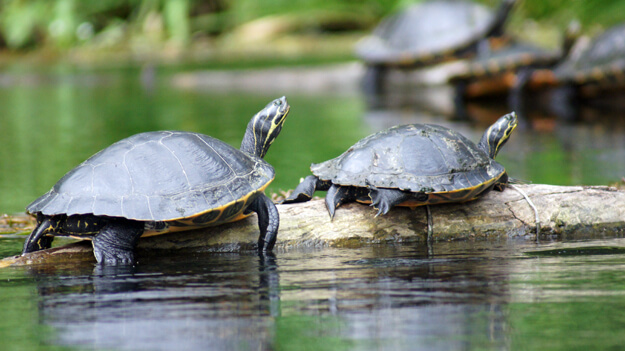
In the 1940s E.V. Babcock’s son transferred 65,000 acres to the State of Florida creating a Wildlife Management Area. The remainder of the 91,000 acres, known as the Crescent B Ranch, continued cattle, timber, and agricultural operations. In 2006 as part of a complex land sale, the State of Florida acquired just over 73,000 acres of the ranch. Under the Babcock Preserve Act, it became a unique public/private partnership where the working ranch, timbering, eco-tourism, and recreational operations provide revenue to help sustain the ranch, thereby reducing its reliance on Florida taxpayers. It is one of the largest single purchases of conservation land in Florida.
Babcock Ranch Benefits the Environment
The environmental significance of the ranch is tremendous. Floridians can be grateful for this wise conservation of acreage and diverse habitats.
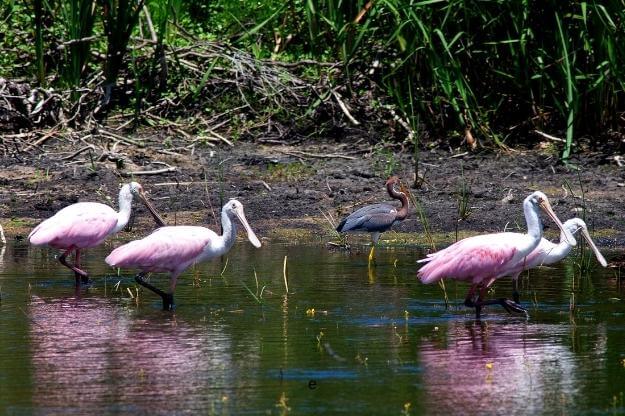
Did you know you can find a large variety of animals on the ranch? Here are a few of the animals you might see.
- Whitetail Deer
- American Alligators
- Blue Herons
- Ibis
- Roseate Spoonbills
- Bald Eagles
- Turtles
- Florida Black Bear
- Wood Stork
- Eastern Indigo Snake
- Florida Burrowing Owl
- Crested Caracara
- Gopher Tortoise
- Red-Cockaded Woodpecker
- The critically endangered Florida panther roams the property.
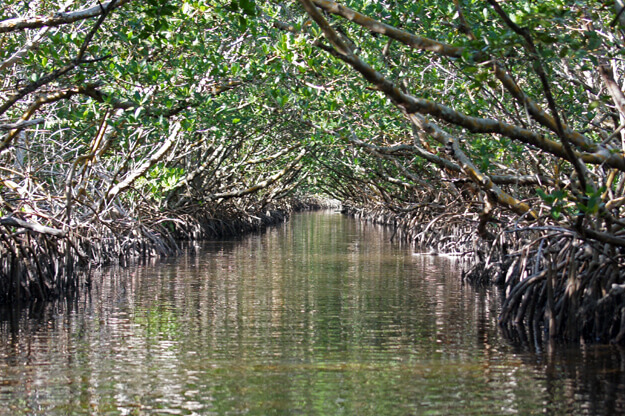
An increasingly important issue facing Florida is that of water. The natural wetlands and swamps of the Babcock Ranch not only provide water for wildlife on the ranch, but also supply aquifers within the Caloosahatchee River Basin, fresh water to the western Everglades, and a steady flow to the Charlotte Harbor estuary.

Our appreciation of this Florida property increased exponentially when we realized how critical this body of land is to our state’s well-being. The impact of these expansive natural parcels was recently highlighted in the Florida Wildlife Corridor Expedition. Its overall vision was (and continues) to be “connect natural lands, water, working farms and ranches from the Everglades to Georgia protecting a functional ecological corridor.” The Babcock Ranch was one of the many Expedition stops.
We are reminded of John Muir’s quote, “When one tugs at a single thing in nature, he finds it attached to the rest of the world” and we believe the Babcock Ranch is a single golden thread intricately woven into our complex and beautiful Florida environment. Enjoy a trip down Florida’s past and present.
Babcock Wilderness Adventures: www.babcockwilderness.com; 1-800-500-5583. Reservations recommended.
“Current public access to the Babcock Ranch Preserve is available in the form of a hiking trail, an equestrian trail, and an eco-tour. Public hunting access is permitted on a portion of the preserve and is administered by the Florida Fish and Wildlife Conservation Commission.”
8000 State Rd 31, Punta Gorda 33982
Charlotte County
17,280 acres
Here are a few other articles you may enjoy:
